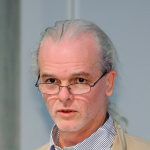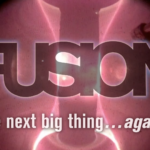Fukushima crisis: Can Japan be at the forefront of an authentic paradigm shift?
By Mycle Schneider | September 9, 2011
The catastrophe now referenced by a single word — Fukushima — is not merely a major natural disaster. The events of 3/11 sent shockwaves through the nuclear industry and governments around the world and constitute the end of a certain economic development model and the industrial risk calculation that underlies it. Giant, centralized electricity production sites that rain kilowatt-hours onto consumers who are constantly increasing their consumption — while accepting risk that can potentially harm millions — are now outdated.
Chernobyl demonstrated the flaws of this model, 9/11 rendered it obsolete, but it took Fukushima for the world to understand that the equation sold to countries around the world…
Very Large Danger Potential x Very Low Accident Probability = Acceptable Risk
…is not acceptable after all, anywhere.
Many of the post-3/11 mishaps, cover-ups, and wrong-headed decisions that Japanese officials have participated in might seem difficult to understand outside the country. But it is unlikely that industry and political leaders in other countries would have done better. The complexity of the situation and the unprecedented nature of the problems involved created a daunting challenge, the full proportions of which are still unknown. Still, the relevant public and industry authorities have been far from up to that challenge.
Indeed, six months after the beginning of the crisis, the technical situation at the Fukushima Daiichi plant is everything but stable. Families and farmers in the region remain desperate. Evacuated families had to leave their pets starving and don't know if they ever can go back to their homes. Farmers had to kill their cattle and destroy their harvests. Some finished by killing themselves. A French independent radioactivity-measuring lab announced recently that it identified up to 700,000 becquerel of cesium per square meter on grass in a primary school in Fukushima City, over 60 kilometers from the Daiichi plant. In post-Chernobyl Ukraine, this contamination level corresponds to a zone of "obligatory resettlement." And yet, this value is far from the maximum levels identified far outside the Fukushima evacuation zone, which can reach several million Becquerel of cesium and iodine per square meter.
Six months after 3/11, public authorities seem to be far from realizing that this problem will not go away for decades. Cesium-137 — which represents about three quarters of the radiological impact of the Chernobyl catastrophe and is likely to dominate Fukushima fallout — has a half-life of 30 years. Radiation levels will take a human generation to decay by half.
In the meantime, as Japanese leaders flounder, it remains unclear when or if off-line nuclear plants will be restarted or what the country's future energy policy will be. Public opinion and financial institutions are pushing politicians and industry leaders in most other countries with nuclear industries or ambitions to fundamentally review energy planning. Some cases — the spectacular nuclear phase-out decisions in Germany and Switzerland, for example — made headlines. Reactions in Finland, France, Italy, the US, and elsewhere got little attention.
In fact, 3/11 only accelerated a pre-existing, global, downward trend in the nuclear industry. The international nuclear lobby has pursued a 10-year-long, massive propaganda strategy aimed at convincing decision-makers that atomic technology has a bright future as a low-carbon energy option. As we have shown in the World Nuclear Industry Status Report 2010-2011, however, most of the high-flying nuclear plans never materialized. The historic maximum of reactors operating worldwide was achieved in 2002 with 444 units. In the European Union the historic peak was reached as early as 1988 with 177 reactors, of which only 134 are left. The only new projects underway in Europe are heavily over budget and much delayed.
As Time magazine rightly stated in March, "Nuclear power is expanding only in places where taxpayers and ratepayers can be compelled to foot the bill." China is building 27 — or more than 40 percent — of the 65 units officially under construction around the world. Even there, though, nuclear is fading as an energy option. While China has invested the equivalent of about $10 billion per year into nuclear power in recent years, in 2010 it spent twice as much on wind energy alone and some $54.5 billion on all renewables combined.
But by the end of 2010 the installed capacity in the world of just four renewable energy technologies — wind, solar, biomass, and small hydro-power (i.e., excluding large dams) — exceeded installed nuclear capacity for the first time. And in fact, the technology of splitting the atom to generate electricity was losing out against renewable energy sources, long before Fukushima happened. In 2004 the share of renewable power capacity newly connected to the US grid was a negligible 2 percent. That share had jumped to 55 percent by 2009.
While the Obama administration remains — at least rhetorically — committed to nuclear in the post-3/11 age, it is not the American government that orders nuclear reactors. Utilities have made it clear that there is no economic case for new construction. In October 2010, Constellation Energy did not see conditions that would be "economically reasonable and statutorily justifiable" and pulled out of a new nuclear project in Maryland that was to have been pursued with French EDF, which in turn had to provision a €1 billion loss on the American market. NRG Energy, the majority shareholder of the South Texas Project (STP), announced in April 2011 that it is withdrawing, writing down a $481 million investment and ruling out any further involvement in the project's expansion. NRG CEO David Crane stated: "The tragic nuclear incident in Japan has introduced multiple uncertainties around new nuclear development in the United States which have had the effect of dramatically reducing the probability that STP 3 and 4 can be successfully developed in a timely fashion."
The London based bank HBSC stated as early as March 18: the "US public may find it difficult to support major nuclear new build and we expect that no new plant extensions will be granted either," and its international analysis concluded that "overall, we expect a number of impacts from the public and political backlash against nuclear, which could mean the focus switches to renewables." Analysts at Swiss-based investment bank UBS summarized the situation in early April: "At Fukushima, four reactors have been out of control for weeks — casting doubt on whether even an advanced economy can master nuclear safety. … We believe the Fukushima accident was the most serious ever for the credibility of nuclear power."
The significant and sometimes dramatic post-Fukushima decisions and announcements in a number of countries seem to confirm the financial sector's early assessments.
Within days of the big earthquake, China unequivocally announced after a State Council meeting chaired by Premier Wen Jiabao, "We will temporarily suspend approval of nuclear power projects, including those in the preliminary stages of development. … We must fully grasp the importance and urgency of nuclear safety, and development of nuclear power must make safety the top priority." The Fukushima crisis may also be "a big dampener" on India's nuclear power program, according to Shreyans Kumar Jain, chairman of the Nuclear Power Corp. of India (NPCIL), who said, "We and the Department of Atomic Energy will definitely revisit the entire thing, including our new reactor plans, after we receive more information from Japan." Debasish Mishra, Mumbai-based senior director at Deloitte Touche Tohmatsu, added: "It will be very difficult to sell the idea of nuclear power to people for any political party after the Japan disaster."
European reactions to 3/11. Perhaps the best illustration of the worldwide rupture effect of the Fukushima catastrophe is in the European Union. Although French President Nicolas Sarkozy said it would be "obviously out of the question to phase out nuclear [power]" that generates around 75 percent of the electricity in his country, for the first time leaders of a major French political party have openly asked for an end to the country's reliance on nuclear power. Socialist Party leader Martine Aubry and number two Harlem Désir have both declared support for a nuclear phase-out, although the party as a whole is still debating the question. The Green Party is campaigning in favor of a national referendum on the issue. Public opinion massively supports the idea. In a June 2011 survey for the weekly Journal du Dimanche, 77 percent of respondents expressed support for a nuclear phase-out. Considering the consistently low polling results for Sarkozy, the next government could be a "green-red" coalition, dramatically altering the landscape for nuclear power in France.
In 2010, Sweden drew 38 percent of its electricity from nuclear plants. In April, the minister for enterprise and energy, Maud Olofsson, said this in a parliamentary debate: "We are not prolonging the use of nuclear power. We have said that we will cut our reliance on nuclear power and that is exactly what we are doing." A poll in the Swedish daily Dagens Nyheter showed that 36 percent of Swedes now support a phase-out of nuclear power, up from 15 percent in 2008. The new Finnish Government announced that, beyond the ongoing, disastrous Olkiluoto-3 project, which is 90 percent over budget and four years behind schedule, it will not grant permission for new nuclear construction. Switzerland, as dependent on nuclear power as Sweden, decided to drop replacement plans and shut down five reactors between 2019 and 2034. A poll published in March showed that 87 percent of the population want the country's nuclear plants phased out. A staggering 94 percent of Italians voted in a June referendum not to re-launch a nuclear program, abandoned following the Chernobyl accident 25 years ago.
Under Chancellor Angela Merkel, Germany has had the most spectacular reaction to the Fukushima disaster. A physicist by training and a former environment minister, Merkel understood what Fukushima meant. Germany has 17 reactors, providing 23 percent of the power in the country and making it the sixth largest nuclear electricity producer in the world. The eight oldest reactors were taken off the grid within days of 3/11 and will not return to operation. In record time, what once was the most pro-nuclear German government in decades prepared comprehensive legislation to phase out the remaining nine reactors by 2022 at the latest, starting in 2015. In June, parliament overwhelmingly passed the law (513 in favor, 79 against, 8 abstentions).
The legislative package included seven other laws that go from energy efficiency (€3 billion per year for buildings alone) to renewable energy (the new target is for a 35 percent share of electricity by 2020; a 20 percent share was achieved in the first half of 2011) to new gas power plants and on to massive expansion of the power distribution system. The political fallout extends well beyond the energy sector. In a historic March election in Bade-Wurttemberg, the Green Party doubled its votes to reach 24.2 percent and trailed only the formerly governing Christian Democratic Union. For the first time, a Green prime minister leads a coalition government (with the Social Democrats) in the third largest German state, which has a population of more than 10 million.
The renewal of renewables. Renewable energy use is growing rapidly around the world. In 2010 Spain generated more than twice as much renewable energy as Japan, increasing generation by a factor of almost 10 since 2000 while Japan hardly moved. Denmark now gets one-third of its electricity from renewables, which are projected to cover over half of the country's needs by 2020. In Germany, solar power provided more than 2,000 megawatts to the grid from 7 a.m. to 6 p.m. and more than 10,000 MW (as much as 10 nuclear reactors) between 10 a.m. and 3 p.m. on July 16, the day I first wrote this article. A quarter of the 16 German states generate more than 40 percent of their electricity by wind alone.
These developments are encouraging but even the most advanced countries remain far from a sustainable, renewable-energy-based economy. For renewables to become the dominant sources of energy, at least four problems must be tackled:
- Energy Services. The goal of successful energy policy must be to provide affordable, sustainable energy services like cooked food, heating and cooling, lighting, communication, and mobility. Too much attention is paid to kilowatt hours of electricity, barrels of oil, and cubic meters of gas. Much of the energy services can be achieved through intelligent design of homes, offices, factories and mobility schemes, drastically reducing the need for external energy input.
- Efficiency. In Germany, per capita electricity consumption increased by 15 percent in the 15 years before 2008. Wind and solar barely covered the increase. As a consequence, carbon dioxide emissions from the power sector remained more or less constant. That situation is now (one hopes) being addressed under the new German energy policy. But whatever the country, unless dramatic efforts are made on efficiency, there is absolutely no chance to achieve high penetration rates for renewables.
- Decentralization. "The future is local" is the title of a report by the UK Sustainable Development Commission. The most efficient way to organize energy services, like other social services, is on the decentralized level. Because large energy companies are centralized, the move to distributed power generation, networks and services is a huge opportunity for small and medium-size business.
- Grid Systems. The massive use of renewable energy sources will require radically different grid systems, for electricity, heating and cooling, and even gas, given that natural gas pipelines can distribute locally produced biogas. The future grid system should be horizontal and highly flexible. Consumers become producers ("prosumers") who are linked in a smart grid that hooks up household appliances, from freezer to electric vehicle. Such a grid will optimize power use according to availability, storing it as ice in the freezer or power in the car battery when it's abundant and switching off appliances when consumption tends to peak.
The Fukushima crisis can be understood as a unique chance "to get it right" on energy policy. Germany — with its nuclear phase-out decision based on a highly successful renewable energy program — and Japan — having suffered a painful shock but possessing unique technical capacities and societal discipline — can be at the forefront of an authentic paradigm shift toward a truly sustainable, low-carbon and nuclear-free energy policy. If the third- and fourth-largest economies and the third- and sixth-largest nuclear electricity producers in the world not only decide to phase-out atomic power, but to phase-in a greatly accelerated reshaping of the energy landscape, they would not only respond to the aspirations of the German and Japanese people. Their example would carry phenomenal weight and offer inspiration around the planet.
Editor's Note: This analysis is based on an article published in Japanese by Sekai Magazine, Tokyo, September 2011. Mycle Schneider, Antony Froggatt, and Steve Thomas co-wrote "2010-2011 World nuclear industry status report," which can be found in the July/August issue of the Bulletin of the Atomic Scientists.
Together, we make the world safer.
The Bulletin elevates expert voices above the noise. But as an independent nonprofit organization, our operations depend on the support of readers like you. Help us continue to deliver quality journalism that holds leaders accountable. Your support of our work at any level is important. In return, we promise our coverage will be understandable, influential, vigilant, solution-oriented, and fair-minded. Together we can make a difference.
Topics: Nuclear Energy, Opinion















